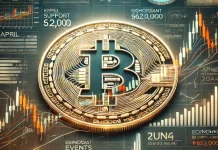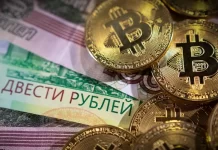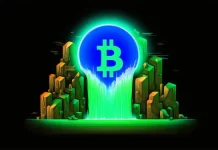[ad_1]
2018 has been a harsh period for cryptocurrencies prices in general. Prices, in general, have been falling from late January until now, with the usual ups and downs.
Nevertheless, as prices and technology rarely come hand-to-hand, during this period we’ve seen some conceptual improvements started being implemented, such as Ethereum side-chains and plasma or Bitcoin’s LN and Superspace (which I aim at discussing on my next piece).
Before you dive into this one, I urge you to read its predecessor available here, where I discuss the role of money in our society, how it can potentially have quantum-like properties and, finally, different ways to measure growth and value.
Growth Accumulation VS Growth Redistribution
One of the most important quests of mankind across centuries has been how to achieve continuous economic growth. From the first world empires to the industrial revolution, the single most important factor that allowed for this unsustainable mindset was the monies creation mechanics. Logic dictates if your monetary system is inflationary, future money will always be worth less than present money. Meaning, it’s quite hard to change monetary policies to support citizens wealth creation, when the object of said wealth creation loses value every year. If we could potentially find a solution to the debt-based system, it would most likely be connected to a better redistribution of wealth, I argue.
There are many paths to chose from to achieve the above outcome, for example, through income distribution STO’s, utility via rewards, airdrops and bounties or even a completely new token scheme with both income, utility and governance. Decentralization allows for different kinds of money systems, not only based on debt but also on your actual time, user participation or physical assets.
The point is: the more projects start to grasp the power tokens can bring as income, utility, governance or investment vehicles, the more token-based organizations will pop-up.
There are many rolled-out platforms like Steemit from the creator of EOS, or the Brave browser from the Basic Attention Token team, which entitle users to receive a reward based on content creation.
Independently of any of these projects success, please remember:
–this article isn’t financial advisement as it represents my personal opinion and views only. I have savings invested in cryptocurrency so take whatever I write with a grain of salt. Do not invest what you cannot afford to lose and always read as much as possible about a project before investing. Never forget: with great power, comes great responsibility. Being your own bank means you’re always responsible for your own money—
Redistribution Comes From Changing Paradigms
There are many arguments against free money creation. How can taxes be applied? What about assets insurance? Will governments still be responsible to protect its citizens through public sponsored schemes? How can regulatory bodies adapt to overcome the challenges of regulating non-proprietary, decentralized and permissionless protocols?
If we look into new organizational theory – how companies’ behavior towards social logic affect performance – we can find refreshing conclusions which may assist us in better understanding the role of money in our society.
For one, companies which have strong social values (ie, hybrid organizations such as cooperatives) are able to maximize both consumers and suppliers utility by not maximizing profits.
Sounds too weird to be true? Let’s use an example to explain how it all works.
Traditional Organizations
SUPPLIER -> COMPANY -> CONSUMER
Companies buy raw materials, transform them into finished products and then sell them to consumers. Let’s say, milk:
- Suppliers: Farmers,
- Company: Stake-holder,
- Consumer: Link (yes, that little guy does love his milk)
Link, the main character from the well-known game series, The Legend of Zelda
The above logic is oversimplified, as I’m taking out important attributes like distribution or finance channels; still, the goal of a traditional company is to maximize profits in order to increase the benefit of those who own it (stakeholders).
To accomplish this objective companies usually pay farmers a low price for milk and sell the finished product (butter, yogurt, milk) to consumers, for as much money as possible.
There are many different ways of maximizing profits, either by reducing costs or increasing market share, but the ultimate goal still remains profit maximization for stake-holders.
Another way to look at it would be to maximize stakeholders’ utility. This usually happens when stake-holders are, for example, suppliers.
*do not mix this concept with backwards (and forwards) integration, as it’s not the same. When a company integrates a supplier, stake-holders remain the same and the goal is still to maximize profits, so the price paid to suppliers is still the minimum possible.
Hybrid Organizations
SUPPLIER <-> COMPANY -> CONSUMER
Supplier: Stake-holder,
Company: Stake-holder,
Consumer: Link (there he goes again, jumping through hyrule)
A great example of institutions that fit the above description is cooperatives. For example, in the Azores, where most of the Portuguese milk production is concentrated, there’s an open market composed of traditional organizations, which aim at maximizing profits, and hybrids (cooperatives) that aim at providing social benefits to its farmers’ community. The curious aspect is that the hybrid organization sees better profits, although is more limited in terms of internal changes, as it needs to accommodate the voices of many different people (see full paper findings here).
Wouldn’t the expected result be exactly the opposite?
Let’s get back to the milk-producing company, to further explain these findings. When an organization maximizes the price paid to suppliers for milk, it’s maximizing its suppliers’ utility. Hence, any farmer that chooses to collaborate with hybrid organizations, in this Azorean milk market, will directly benefit from profits maximization.
If you would like to take our train of thought one step further, you could argue: What if we integrate all economic agents with our stake-holder logic?
Decentralized Organizations
SUPPLIER <-> COMPANY <-> CONSUMER
In this scenario, we come back to our previous understanding of how money works: it expresses a sort of entanglement between agents.
If our goal remains as maximizing stake-holders utility, by maximizing their profits, while everyone is treated as a stake-holder, we come to the below conclusion:
Supplier: Stake-holder (farmers),
Company: Stake-holder,
Consumer: Stake-holder (Link);
How can we possible maximize both suppliers utility, company utility and consumer utility, if there is always a Pareto’s optimum and equilibrium?
this is, it becomes impossible to maximize one agent’s utility without minimizing some other agent’s utility.
The Theory Of Everything
If we understand how money flows between agents and how do they benefit from it, we come to the conclusion the only way to increase value to all participating agents is if all of them have an economic incentive to participate by getting rewards.
Simply put: the only way to maximize colliding logics is by adding a proxy of value. Let’s take a look at the below example to better comprehend this conundrum.
SUPPLIER STAKE-HOLDER: maximize price of milk,
COMPANY STAKE-HOLDER: minimize price of supplier milk, maximize price of consumer milk
CONSUMER STAKE-HOLDER: minimize price of milk
If all logics are contrarian, then an incentive is needed so that when value flows from consumer to company and from company to supplier, an exactly opposite reward flows from supplier to company and from company to consumer.
This is, when there is a proxy monetary incentive (ie, token) which is given to consumers for participating (by purchasing) and is gifted with a certain utility purpose (voting, staking, rewards), the model stops being measured in profits to be measured in token value.
If this argument is confusing think that by creating a token which travels in the opposite direction of money spent, and by bestowing tokens with the power to perform actions that change the outcome of production, governance or price, then every agent becomes a sort of stake-holder (in this case, token holder).
Adapting To Real Life
When Link goes to the market and purchases milk, what he’s really purchasing is the Mtoken (the milk token). As the Mtoken is directly associated to a physical thing (a milk carton, for example), it still seems you’re buying milk, although in reality, Link is buying tokens which in turn represent a certain amount of milk (following our logic, milk is the bonus not the tokens).
Now, because Link is the owner of Mtokens he is entitled to spending those tokens within the milk community. If tokens have both money and asset properties, then it means they can reward users at the same time as they serve a utility purpose.
Every time there is a purchase, that money is converted into tokens, which is then granted to all agents as a reward: suppliers, company and other customers.
In a sense each time a product is purchased, tokens are minted and given to every agent. If you’re worried about the outcome, as money would “lose” its value, think again:
- Products could be purchased with any given currency because the value would come from tokens being minted as a product changes ownership. What this means is, whenever a product or service changes ownership what happens, in fact, is a transaction which mints tokens as a reward to both agents: the buyer and the seller. As more products are bought and sold, more tokens are gifted, which can later be used as money by agents agreeing on a set value of tokens per product.
- If we assume money used to purchase milk is then redistributed to all token holders, then all agents are incentivized to see value in the tokens.
The ABC Example
A -> Customer, B -> Company, C -> Farmer
A purchases milk from B.
A owns:
B owns:
B purchases milk from C.
B owns:
C owns:
Total tokens
Customer A: 2 MT
Company B: 3 MT, 1EUR
Supplier C: 1 MT, 1EUR
After tokens are created, value can be expressed in any currency, as the proxy (Mtoken) becomes a unit of measurement. With the above logic being true, the assumption is that any interacting agent will see value in the token.
However, we could wonder of what would happen if either token prices devalued too much or exploded in value:
- If tokens are dumped by holders, way below market price, the incentive is to buy those cheap tokens as each token awards more milk.
- If tokens become expensive to spend because they hold more value (ie, bitcoin), what we can expect is other forms of money (fiat, for example) to be used in order to purchase milk.
The Utility Argument
If utility is granted to the Mtokens, like the ability to participate in different forms of governance, or the ability to power-up certain suppliers – by introducing game-like mechanics which gives token holders the capacity to delegate tokens based on quality, quantity or even geographic location – what we can expect are different behaviors depending on agents’ social logic:
- Customers will most likely benefit directly from selling tokens for more milk,
- Companies will benefit directly as they can receive more tokens and give the same milk reward,
- Suppliers will benefit as, they too, receive tokens on each transaction.
Because tokens reward milk, we can entangle both physical and virtual assets with value.
Very simply put, there is a social logic which can entitle all participants to being rewarded on each transaction, by making the money-asset of said transaction the item traded and the product the reward.
The best part?
Because tokens are exchangeable for any other form of currency, the reward holds value as it can be traded (bartered) for other items. This means, at the same time tokens reward milk, they can be traded for other tokens which reward different assets.
Instead of money being traded in a traditional debit-credit form, we could look at it as something we will always be entitled to, no matter what.
Much like hybrid organizations social logic collides with profit-making logic, token rewards won’t make sense if you measure growth by itself and not by its redistribution. Hence, by allowing companies to create and redistribute value through its community of members, we create a new model based on maximizing community utility and not company profits.
Arguably, the Mtoken model discussed above could be tweaked to have a maximum supply of tokens (like most cryptocurrencies), in order to create money with deflationary properties. Independently, even with inflationary token models destroying value as time goes by, due to the fact the actors creating currency change, from central institutions to mere every-day organizations, power structures also change, because, as we know so very well:
Money = Power.
Conclusion
Yes, it is true we’ll still need to work in order to create value; however, money could be much better redistributed among every agent because every agent is part of every organization (as networks operate).
Either as an employee, investor, supplier, consumer or citizen, if there is a money-asset which serves as a reward, granted of utility purposes within its ecosystem, then value becomes easier to get because it is automatically redistributed in the form of a participation reward.
Anyone who transacts is given some value in return, meaning, money could behave much like energy does: it never disappears and just transforms into something else, adding value to the universe of money.
Let me know your thoughts down below.
This topic is quite complex and I only managed to reach its surface. There’s much research being done both on the topics of incentives and rewards: can they be the catalyst to a better wealth distribution or will they turn people into different kind of slaves, foraging for quick and easy money? There’s a great deal of subjectivity to the topic and my wish is to foster discussion and alternative ways of creating and measuring value. Whatever the end result, I still happen to believe happiness is an achievable goal to mankind and the sooner we try alternate solutions, the better.
Featured image from Shutterstock.
Follow us on Telegram or subscribe to our newsletter here.
• Join CCN’s crypto community for $9.99 per month, click here.
• Want exclusive analysis and crypto insights from Hacked.com? Click here.
• Open Positions at CCN: Full Time and Part Time Journalists Wanted.
Advertisement
[ad_2]
Source link






